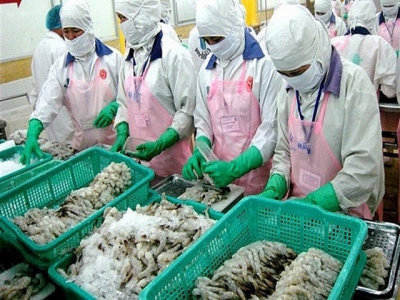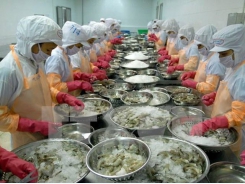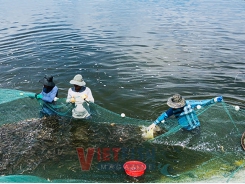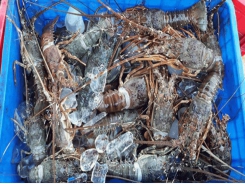Aquatic exports set to reach US$8.3 billion amid signs of recovery

Vietnam's seafood exports look poised to bounce back in the third and fourth quarters and are likely to hit between US$8.26 billion and US$8.3 billion over the course of the year, according to the Association of Seafood Exporters and Producers (VASEP).
According to figures released by the General Department of Customs, July witnessed the country’s seafood export turnover reach a figure of US$796.3 million, up 0.8% compared to the previous July. As a result, seafood exports in July continued to undergo a recovery after recording a 0.3% rise in June.
Over the course of the opening seven months of the year, aquatic export turnover reached a figure of US$4.4 billion, representing an annual drop of 6%.
Throughout the reviewed period, aquatic exports to the United States continued to enjoy positive growth with an increase of 20.8% on-year to US$184.35 million, bringing seafood exports during the seven-month period to US$838.44 million, up 4.5% from the corresponding period the previous year.
Furthermore, seafood exports to the EU market also witnessed an improvement, with a drop of a mere 2.3% from last July, while the decrease in previous months stood at over 18%. Elsewhere, aquatic exports to Japan are still facing several difficulties, whilst exports to China have fallen once again.
The VASEP believes that with the novel coronavirus pandemic yet to be brought under control globally, it will continue to affect Vietnamese seafood exports to foreign markets during the second quarter of the year. After enduring a decline of 16% in May to US$639 million, seafood exports in June suffered a further decline of 10% to US$626 million.
Despite these falls to various markets, the VASEP anticipates that seafood exports will gradually witness a recovery during the third and fourth quarters, with the entire year’s export turnover predicted to hit US$8.26 to US$8.3 billion, a drop of 3.8% from last year.
Moreover, there remains plenty of optimistic signs for exports as retail sales in the global market remain stable, with increased demand for frozen, canned, chilled, and smoked seafood with a longer shelf life.
At present, global seafood trade is stagnant due to interrupted shipping, although the trend of electronic transactions and online retail will partly offset plummeting market demand.
The VASEP also states that the EU-Vietnam Free Trade Agreement (EVFTA), which came into effect from 1 August, could serve as a "boost" for the nation's seafood exports during the remaining months of the year. This could particularly apply to items which are entitled to enjoy a tax rate of 0% as soon as the agreement comes into effect, such as tiger shrimp, frozen white shrimp, and processed octopus and squid.
"The EVFTA will serve as a catalyst for the fisheries sector to increase its competitive advantage over countries which have FTAs with the EU, such as Ecuador, India, and Thailand. According to many studies, after the trade deal enters into force, seafood exports to Europe may increase 20% compared to before as a result of the competitive advantage over other nations. For example, European partners will increase their buying of Vietnamese tuna which will enjoy a tax rate of 0%, instead of buying from other markets with higher tax rates," VASEP Secretary General Truong Dinh Hoe analyses.
Có thể bạn quan tâm
Phần mềm

Phối trộn thức ăn chăn nuôi

Pha dung dịch thủy canh

Định mức cho tôm ăn

Phối trộn phân bón NPK

Xác định tỷ lệ tôm sống

Chuyển đổi đơn vị phân bón

Xác định công suất sục khí

Chuyển đổi đơn vị tôm

Tính diện tích nhà kính

Tính thể tích ao hồ




 Pangasius exports to Singapore are positive
Pangasius exports to Singapore are positive  Việt Nam shrimp exports to South Korea to…
Việt Nam shrimp exports to South Korea to…